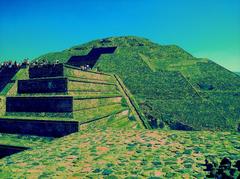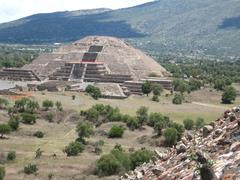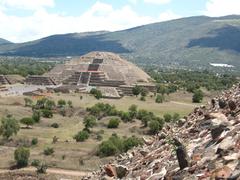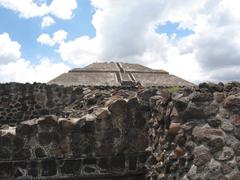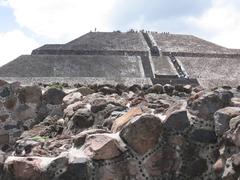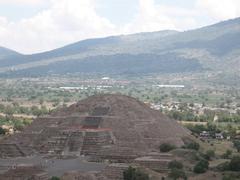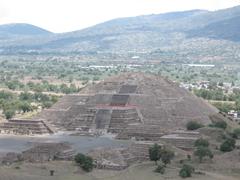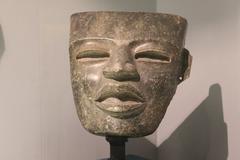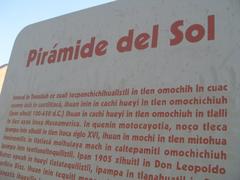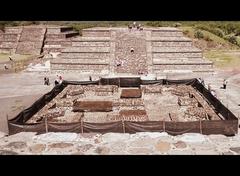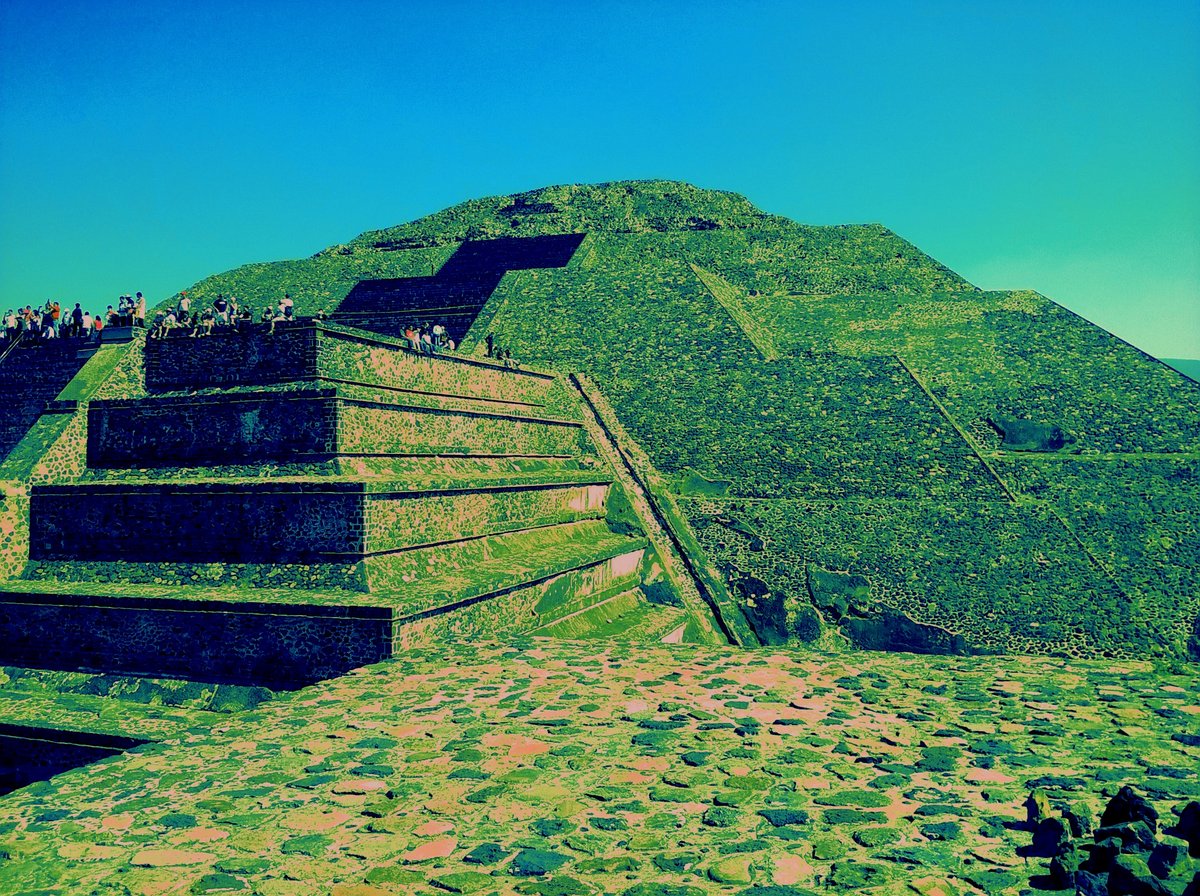
Pyramid of the Moon: Visiting Hours, Tickets, and Comprehensive Guide to Teotihuacan Historical Site
Date: 14/06/2025
Introduction: The Pyramid of the Moon and Its Cultural Significance
The Pyramid of the Moon, located in the northern sector of the ancient city of Teotihuacan, Mexico, is a monumental structure embodying the ingenuity, spiritual beliefs, and societal complexity of pre-Columbian Mesoamerica. As the second-largest pyramid at Teotihuacan, it served as a ceremonial focal point, closely linked to cosmic balance, fertility rites, and the worship of the so-called Great Goddess. Its alignment with the Cerro Gordo volcano and strategic placement at the terminus of the Avenue of the Dead reveal its significance in urban planning and religious cosmology. This guide provides a thorough overview of the pyramid’s history, architecture, ritual practices, and archaeological findings, along with practical visitor advice for a memorable experience (Mexico Historico; worldhistoryedu.com).
Table of Contents
- Introduction
- Brief History of Teotihuacan and the Pyramid of the Moon
- Location and Urban Context
- Architectural and Artistic Highlights
- Religious Significance and Ritual Practices
- Archaeological Discoveries
- Visitor Information: Hours, Tickets, Accessibility
- Travel Tips and Nearby Attractions
- Frequently Asked Questions (FAQ)
- Visual and Media Suggestions
- Conclusion and Call to Action
- References
Brief History: Teotihuacan and the Pyramid of the Moon
Teotihuacan, once one of the world’s largest cities (100 BCE–650 CE), flourished with a population of up to 200,000 people and served as a major political, religious, and economic hub (Mexico Tours). The Pyramid of the Moon, constructed between 200 and 450 CE, reflects the city’s multicultural composition and complex ceremonial life. Its construction and orientation were purposefully designed to align with the Cerro Gordo volcano, symbolizing the cycles of nature and fertility (Journey to Mexico; worldhistoryedu.com).
Location and Urban Context
Located approximately 30 miles (50 km) northeast of Mexico City, the Pyramid of the Moon anchors the northern end of the Avenue of the Dead, Teotihuacan’s principal ceremonial avenue. The pyramid’s broad base (about 130 x 156 meters) and 43-meter height mirror the contours of Cerro Gordo behind it, creating a powerful visual and spiritual link between the built and natural environments (Uncovered History; Mexico Historico).
Architectural and Artistic Highlights
Construction Phases and Design
The pyramid was built in multiple phases from the 1st to 7th centuries CE, using a core of stone and adobe, layered with successive masonry. Its stepped design and orientation reflect advanced planning and cosmological knowledge (Mexico Historico).
Platforms, Terraces, and Access
The structure features a central staircase, broad terraces, and a summit platform that once held a temple. The Plaza of the Moon at its base served as a gathering place for major ceremonies.
Sculptures, Carvings, and Iconography
Stone carvings and murals depict jaguars, serpents, and the Great Goddess, symbolizing fertility, power, and lunar cycles. Remnants of colored pigments suggest the pyramid was once vibrantly painted (Uncovered History).
Engineering Techniques
Employing talud-tablero architecture (alternating sloped and vertical panels), the pyramid’s construction demonstrates advanced engineering, including integrated drainage systems and retaining walls (Mexico Historico).
Religious Significance and Ritual Practices
Deities and Cosmology
The Pyramid of the Moon was a center for worshipping the Great Goddess—associated with water, fertility, and the moon—and other deities linked to agriculture, rain, and cosmic cycles (iamthevoluntourist.com).
Rituals and Offerings
Agricultural ceremonies, human and animal sacrifices, and dedicatory offerings (obsidian blades, ceramics, jewelry, and even liquid mercury) took place here, reinforcing social hierarchies and the city’s collective identity (el-observador.com; mexicohistorico.com).
Subterranean Features
Beneath the pyramid, archaeologists have found tunnels and chambers containing elaborate offerings and burials, possibly symbolizing entrances to the underworld (UCR News).
Archaeological Discoveries
Recent excavations uncovered dedicatory chambers filled with remains of humans, jaguars, pumas, wolves, golden eagles, and symbolic artifacts, indicating the pyramid’s role in state power and religious authority (el-observador.com). Advanced technologies like ground-penetrating radar and 3D scanning have revealed hidden ceremonial spaces, deepening our understanding of Teotihuacan’s rituals (mexicohistorico.com).
Visitor Information: Hours, Tickets, Accessibility
Visiting Hours
- Open daily from 9:00 AM to 5:00 PM. Arrive early for fewer crowds and cooler temperatures (charcotrip.com).
Tickets and Admission
- Entrance fee: Approximately 100 pesos (~4–5 USD), including access to the pyramids and on-site museums.
- Buy tickets at the entrance or online through official tourism websites or authorized tour operators. Advance booking is recommended during peak seasons (iamthevoluntourist.com).
Accessibility
- Main avenues and plazas are wheelchair accessible, but climbing the pyramid is not. Climbing is permitted only on the lower five-tiered platform; the summit is closed for preservation (drivemexicomagazine.com).
- Restrooms are located near entrances; facilities near the pyramid itself are limited (solemateadventures.com).
Guided Tours and Special Events
- Guided tours (available in several languages) offer valuable context and may include access to restricted areas.
- Special events, workshops, and cultural performances occasionally take place onsite (mexicohistorico.com).
Travel Tips and Nearby Attractions
Getting There
- Bus: Direct buses from Mexico City’s Autobuses del Norte terminal take about 1 hour (cost: ~100 pesos) (charcotrip.com).
- Car: Accessible via major toll roads from Mexico City.
- Guided Tours: Many operators include transportation, entry, and guide services (travelwithintention.com).
What to Bring
- Water, sun protection (hat, sunglasses, sunscreen), sturdy shoes, cash, and a camera.
- Dress in light, breathable clothing and be mindful of the altitude (2,200 meters/7,200 feet) (solemateadventures.com).
Nearby Attractions
- Pyramid of the Sun: The largest pyramid at Teotihuacan.
- Temple of the Feathered Serpent (Quetzalcoatl): Major ceremonial complex.
- Museums: Museum of Teotihuacan Culture and Museum of Teotihuacan Murals.
- La Gruta Cave Restaurant: Unique dining experience near the site (iamthevoluntourist.com).
Unique Experiences
- Hot Air Balloon Rides: Popular for sunrise aerial views (voyagemexique.info).
Frequently Asked Questions (FAQ)
Q: What are the visiting hours?
A: Daily, 9:00 AM–5:00 PM.
Q: How much are tickets?
A: About 100 pesos (~4–5 USD). Discounts for students and seniors.
Q: Can I buy tickets online?
A: Yes, via official tourism sites or authorized operators.
Q: Can I climb the Pyramid of the Moon?
A: Climbing is limited to the five-tiered front platform; summit access is restricted.
Q: Is the site accessible for wheelchairs?
A: Main avenues and plazas are accessible, but the pyramids have steep steps.
Q: Are guided tours available?
A: Yes, in multiple languages.
Visual and Media Suggestions
- Images:
- “Pyramid of the Moon at Teotihuacan during sunrise”
- “Visitors climbing the Pyramid of the Moon at Teotihuacan”
- Map:
- Highlighting the Pyramid of the Moon, Pyramid of the Sun, and key attractions.
- Virtual Content:
- Links to virtual tours and videos showcasing the Avenue of the Dead and museums.
Conclusion and Call to Action
A visit to the Pyramid of the Moon is a chance to step into the heart of ancient Mesoamerican civilization, experiencing the grandeur, artistry, and spiritual traditions of Teotihuacan. By planning ahead—considering visiting hours, tickets, and site etiquette—you’ll enrich your understanding and enjoyment of this UNESCO World Heritage Site. Explore nearby attractions, respect preservation rules, and consider guided tours or balloon rides for a deeper connection to Mexico’s cultural legacy.
For up-to-date information, downloadable maps, and exclusive content, download the Audiala app and follow our social media channels. Don’t miss related guides on the Pyramid of the Sun and other Teotihuacan highlights.
Summary: Key Points for Travelers
Visiting the Pyramid of the Moon offers a profound journey into Teotihuacan’s spiritual and cultural heritage. Key tips:
- Arrive early for the best experience.
- Secure tickets in advance during peak times.
- Only designated areas are open for climbing; summit access is restricted.
- Take advantage of guided tours, museums, and nearby attractions.
- Prepare for the altitude and bring essentials like water, sun protection, and sturdy footwear.
- Respect the site’s rules and cultural significance.
For ongoing updates and travel resources, download the Audiala app (Mexico Historico; worldhistoryedu.com).
References
- Mexico Historico – The Story Behind the Ancient City of Teotihuacan
- Uncovered History – Visiting the Pyramid of the Moon
- World History Edu – History of Teotihuacan
- UCR News – How Animals, People, and Rituals Created Teotihuacan
- El Observador – How Animals, People, and Rituals Created Teotihuacan
- Journey to Mexico – Visiting Teotihuacan
- Charco Trip – Your Ultimate Guide to Visiting the Pyramid of the Moon
- I am the Voluntourist – Teotihuacan Pyramids Travel Tips
